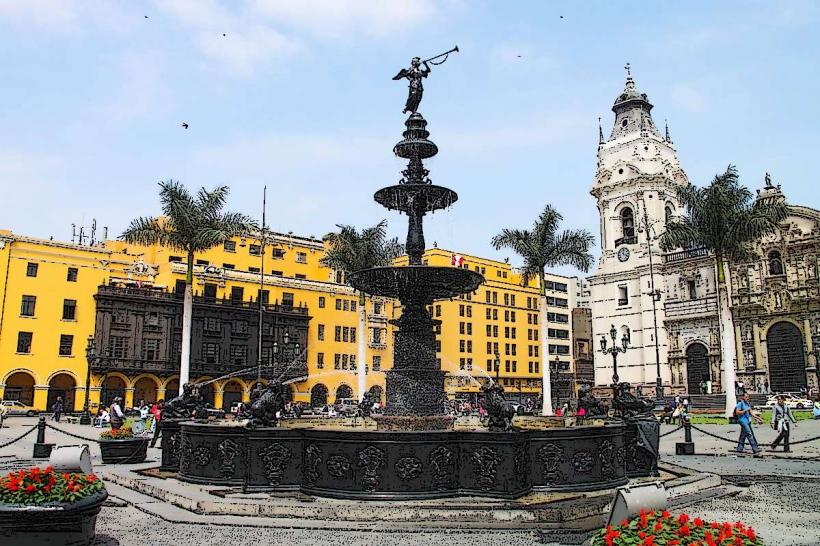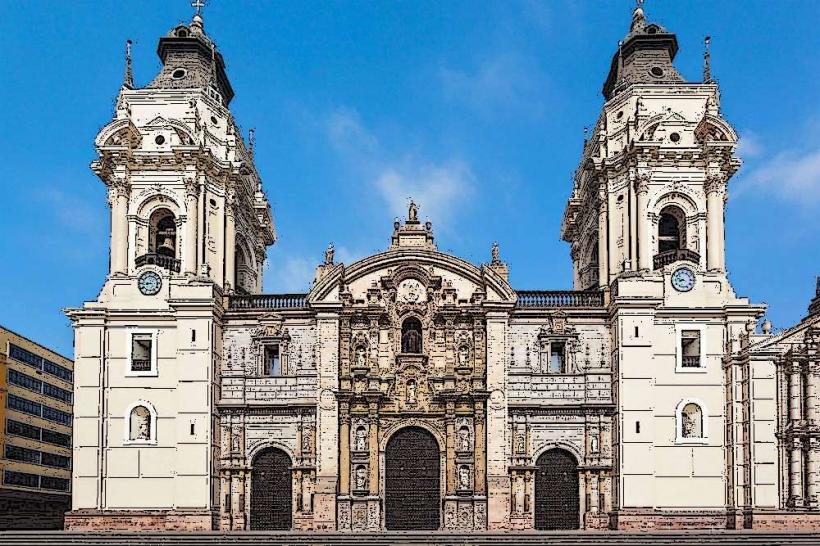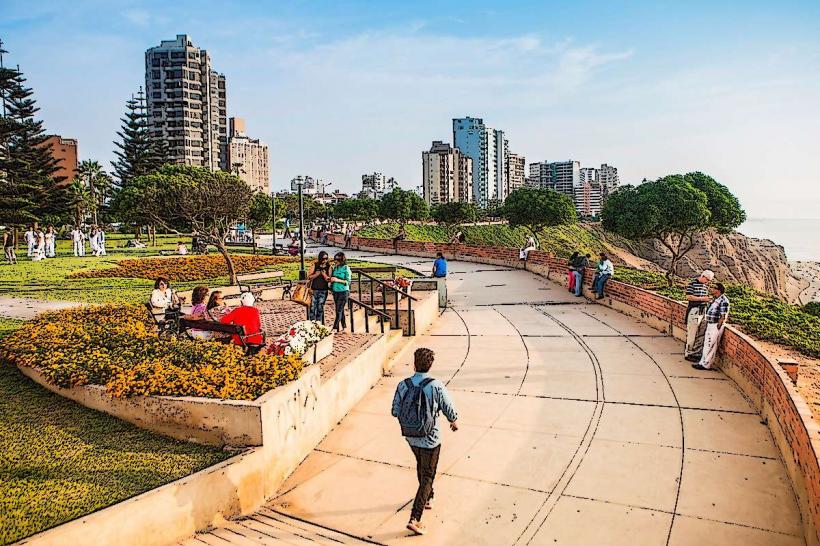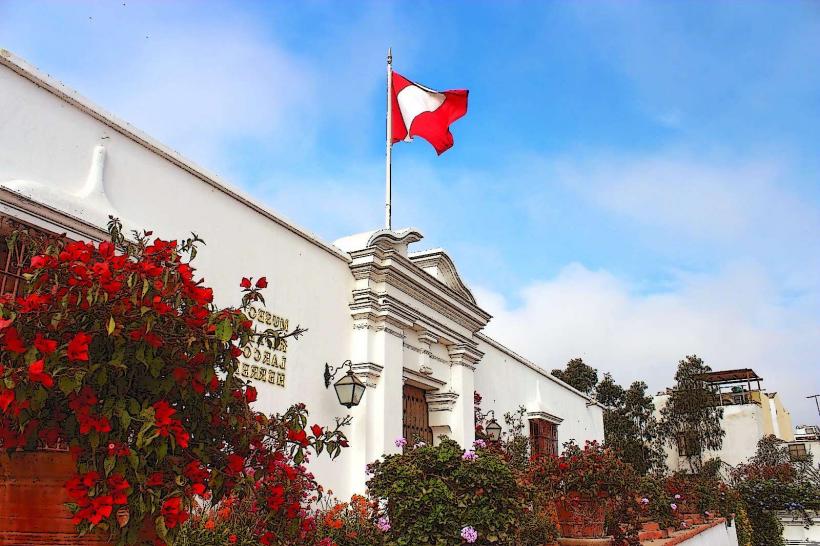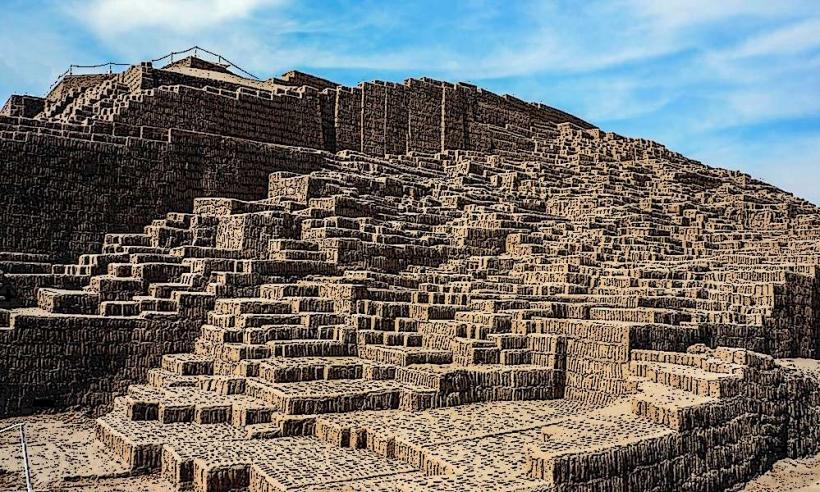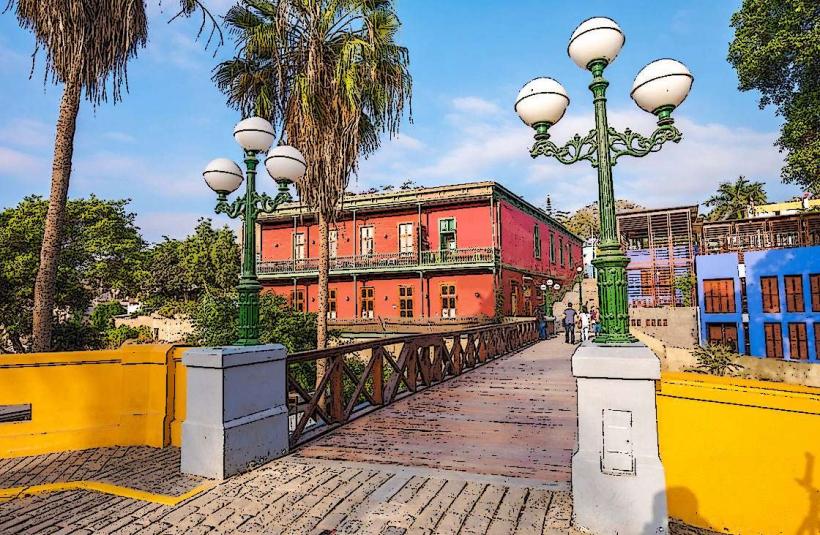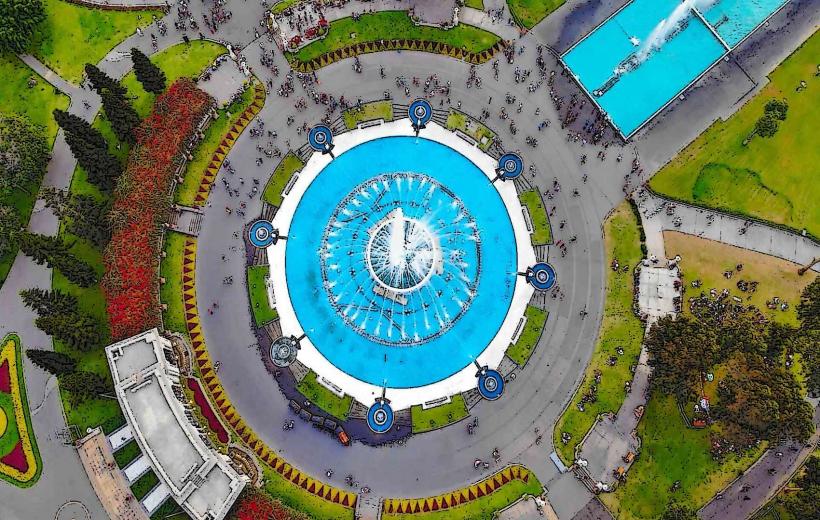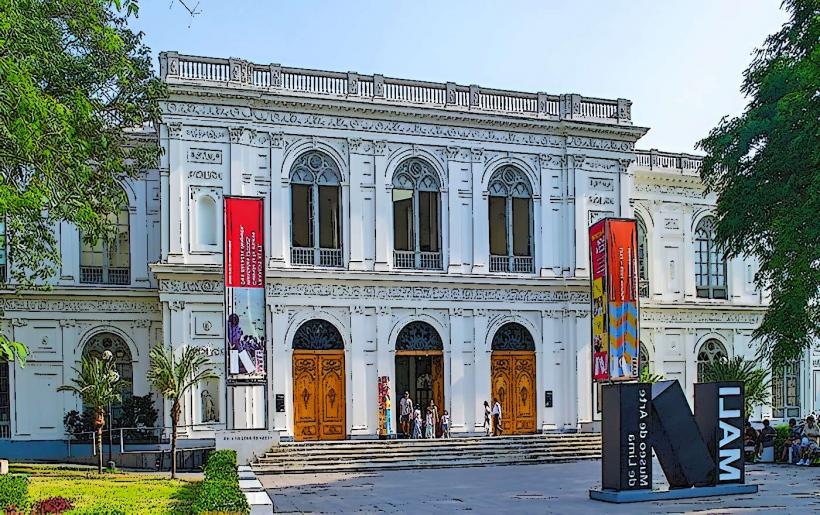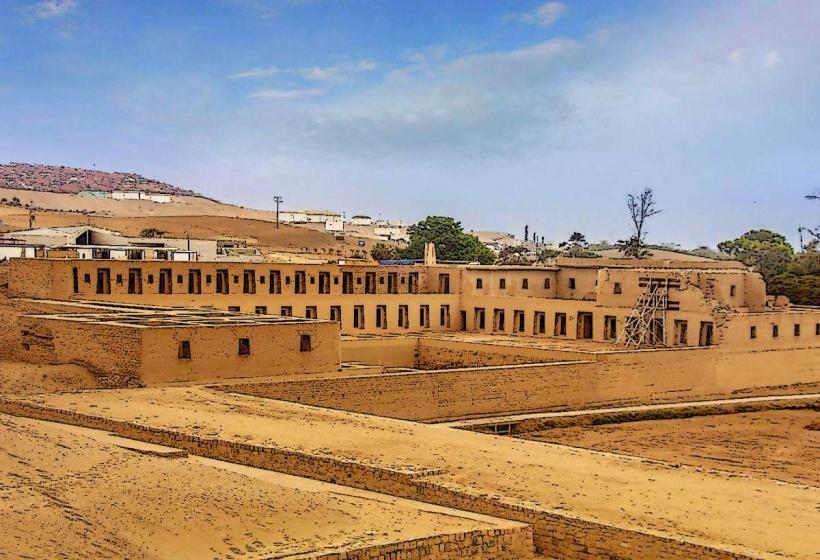Information
Landmark: San Francisco MonasteryCity: Lima
Country: Peru
Continent: South America
The San Francisco Monastery (Monasterio de San Francisco) is one of Lima’s most iconic colonial landmarks. Located in the historic center of Lima, Peru, this Baroque-style monastery is a testament to the city’s colonial past and a significant cultural and religious site. It is renowned not only for its stunning architecture but also for its historical role in Lima's spiritual and intellectual life.
1. History
Foundation: The San Francisco Monastery was founded in 1546 by the Franciscan Order of Catholic friars. It was constructed as part of the Franciscans' mission to spread Catholicism in the Spanish viceroyalty of Peru and to serve as a religious center for the city's Catholic community.
Colonial Significance: As one of the first major religious buildings in Lima, it became an important center for the Franciscan community, both as a place of worship and as a hub for education and scholarship in the Spanish colonial era.
Construction: The monastery's construction, completed in 1673, was influenced by Baroque architecture, which was popular during the colonial period. It was designed with a focus on elegance, spiritual devotion, and luxury, typical of many religious buildings constructed during the era.
Restorations: Over the centuries, the monastery has undergone various restorations and renovations, particularly following earthquakes, such as the 1746 Lima earthquake that caused significant damage. These efforts helped preserve the building’s distinctive features and intricate artwork.
2. Architecture and Features
1. Exterior
Facade: The monastery features a stunning Baroque facade with elaborate stone carvings, columns, and religious symbols. The entrance is marked by a large, ornately carved wooden door and is framed by intricate stonework.
Clerestory Windows: Above the entrance, there are clerestory windows that allow natural light into the interior. The building is also characterized by arched doorways, elaborate windows, and decorative elements that reflect the opulence of the colonial era.
Patio and Courtyards: The monastery includes beautifully landscaped patios and courtyards with fountains, colorful ceramic tiles, and lush greenery. These open spaces were designed to provide a peaceful environment for contemplation and prayer.
2. Interior
Main Chapel: The main chapel of the monastery features a richly decorated altarpiece with gold leaf, baroque carvings, and religious paintings. The altar is the focal point, and the space is designed to create a sense of awe and reverence.
- The ceilings are adorned with frescoes and paintings that depict biblical scenes, including representations of saints and the Holy Trinity.
Monastic Cells: The monastery has cells (rooms) for the friars, which are simple yet reflective of their austere lifestyle. The friars who lived here followed the Franciscan Order’s vow of poverty, and the rooms were minimally furnished, focusing on prayer, meditation, and scholarly work.
Library: The library of the San Francisco Monastery is one of the most impressive parts of the building. It houses an extensive collection of antique books, manuscripts, and religious texts, some of which are more than 400 years old. It reflects the intellectual legacy of the Franciscans in Peru.
3. Catacombs and Underground Chambers
One of the most unique features of the San Francisco Monastery is its catacombs, located beneath the monastery. These underground chambers were used as cemeteries from the time of the monastery's founding until the early 19th century.
Historical Use: The catacombs were primarily used for the burial of the monks, as well as Lima's elite and wealthy families. Due to the lack of space in the city, the catacombs served as an essential burial site for many centuries.
Chamber of Bones: Visitors can explore the catacombs, which contain skeletal remains arranged in elaborate patterns. The bones of over 70,000 individuals are said to rest beneath the monastery, making the catacombs an eerie and fascinating aspect of the complex.
Tours: Guided tours of the catacombs provide historical insights into the religious practices and burial customs of colonial Lima, as well as the role of the Franciscans in the city’s spiritual and social life.
4. Art and Decorations
Baroque Art: The San Francisco Monastery is home to numerous examples of Baroque religious art, including paintings, sculptures, and altarpieces. The works typically depict scenes from Christian theology, such as the Crucifixion of Christ, angels, and saints. These artworks were intended to inspire devotion and convey religious teachings to the largely illiterate population.
Woodwork: The monastery features intricately carved wooden altars, pulpits, and choir stalls. The woodwork is a hallmark of the Spanish Baroque style, with rich detailing and symbolic motifs, including flowers, angels, and Christian symbols.
Tiles and Ceramic Art: The monastery is decorated with **brightly colored ceramic tiles that display the intricate Mudejar style, which was a blend of Islamic and Spanish influences. These tiles adorn both the interior and exterior walls, giving the building a distinct, lively appearance.
5. Religious Role and Cultural Importance
Franciscan Order: The San Francisco Monastery played a central role in Peru’s religious and intellectual life during the colonial period. The Franciscan friars who resided here were involved in religious education, missionary work, and the conversion of indigenous peoples to Catholicism.
Cultural and Scholarly Contributions: In addition to their religious duties, the Franciscans were scholars and played a role in the development of Peruvian culture. The monastery was an intellectual hub, with scholars producing important works on Peruvian history, linguistics, and theology.
Modern Role: Today, the monastery continues to serve as a place of worship and spiritual retreat. It is also a major tourist attraction and an important example of Lima’s colonial heritage. The San Francisco Monastery is a key part of the UNESCO World Heritage Site designation for Lima’s historic center.
6. Visiting the San Francisco Monastery
Opening Hours: The monastery is open to visitors daily, typically from 9:00 AM to 5:00 PM. Guided tours are available in several languages, providing visitors with detailed information about the history, architecture, and art of the monastery.
Admission: There is usually an admission fee for visitors, which helps support the maintenance and preservation of the monastery. The fee is typically modest, and tours are available in both group and private formats.
Location: The San Francisco Monastery is located near Plaza Mayor, in the historic center of Lima. It is easily accessible by public transportation, including buses and taxis, and is within walking distance of other important landmarks, such as the Lima Cathedral and Plaza San Martín.
7. Nearby Attractions
Plaza Mayor: The San Francisco Monastery is located in Plaza Mayor, the central square of Lima, which is surrounded by other major historical buildings, such as the Lima Cathedral, Government Palace, and Municipal Palace.
Lima Cathedral: Located just across the square, the Lima Cathedral is one of the most significant religious structures in the city, containing historical relics, including the tomb of Francisco Pizarro, the founder of Lima.
Museo de la Inquisición: A short distance from the monastery, this museum provides insights into the history of the Spanish Inquisition in Peru and its role in colonial society.
The San Francisco Monastery is a unique and fascinating landmark in Lima, offering visitors a glimpse into Peru’s colonial past through its architecture, art, and historical significance. With its beautiful design, intriguing catacombs, and rich history, it remains a must-visit destination for anyone exploring the spiritual and cultural heritage of Lima.

